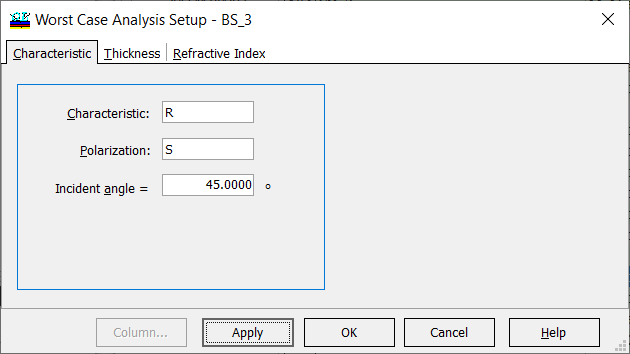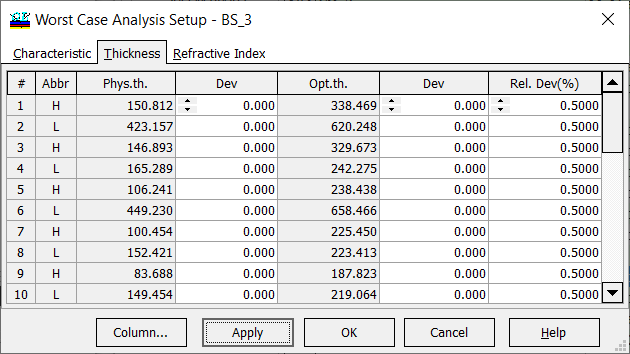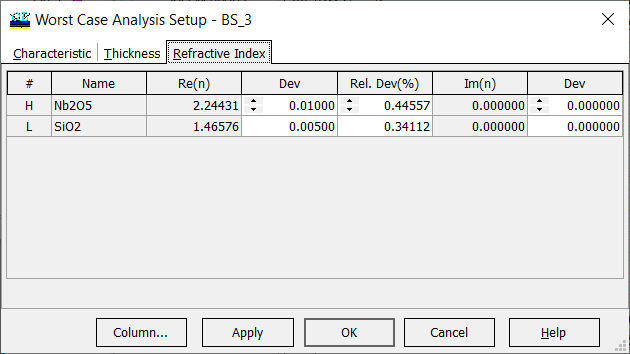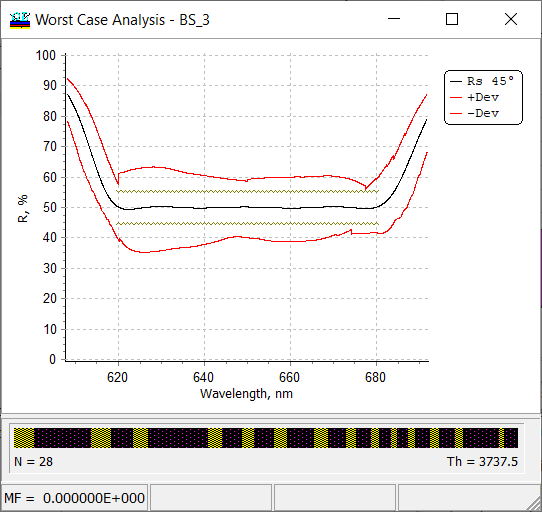|
Analysis –> Errors –> Worst case… OptiLayer calculates the largest variations of spectral characteristics provided that layer parameters (thicknesses and refractive indices) can vary within certain limits defined in Worst Case Analysis Setup window. The Worst Case Analysis can be performed only for one spectral characteristic at a time. You should specify the type of this characteristic (Transmittance, Reflectance, etc.), the state of polarization and the angle of incidence prior to calculations (Fig. 1). |
Fig. 1. Settings for Worst Case Analysis. |
| You can perform the Worst Case Analysis for layer thickness errors and for refractive index errors. In both cases it is necessary to specify maximum allowed parameters deviations in Thickness tab and Refractive Index tab (Figs. 2 and 3). | |
|
Fig. 2. Example. Maximum allowed errors (0.5%) in layer thicknesses are specified. |
Fig. 3. Example. Maximum allowed deviations, 0.01 in high-index materials and 0.005 in low-index materials, are specified. |
|
The spectral characteristics in the worst case are calculated in the following way. For each wavelength, OptiLayer calculates the spectral characteristic, which are maximally deviates from the nominal characteristic. Then, OptiLayer plots +Dev and -Dev, representing maximal deviations of the disturbed spectral curves from the nominal ones. It is not surprising that +Dev and -Dev are not smooth curves. These curves do not have any physical sense but they give an estimation of the expected deviations. |
Fig. 4. Example. Worst case analysis of a beamsplitter solution BS_3 with settings shown in Figs. 2 and 3. |
OptiLayer provides user-friendly interface and a variety of examples allowing even a beginner to effectively start to design and characterize optical coatings. Read more…
Comprehensive manual in PDF format and e-mail support help you at each step of your work with OptiLayer.
If you are already an experienced user, OptiLayer gives your almost unlimited opportunities in solving all problems arising in design-production chain. Visit our publications page.
Look our video examples at YouTube
OptiLayer videos are available here:
Overview of Design/Analysis options of OptiLayer and overview of Characterization/Reverse Engineering options.
The videos were presented at the joint Agilent/OptiLayer webinar.




